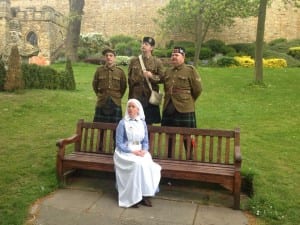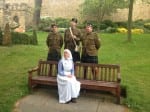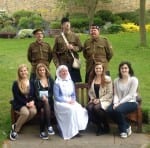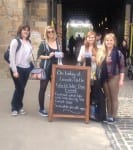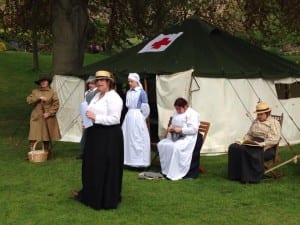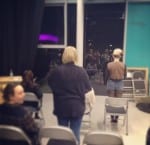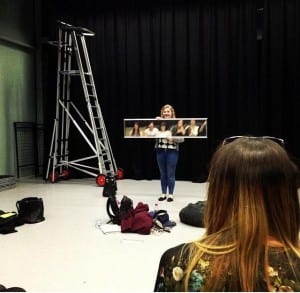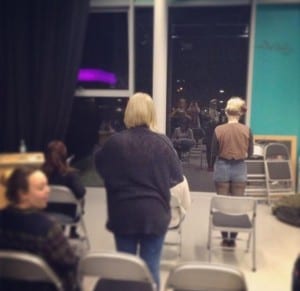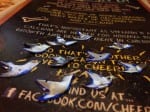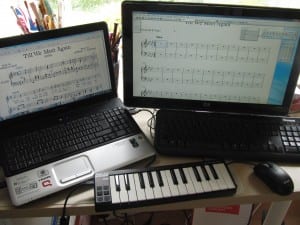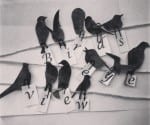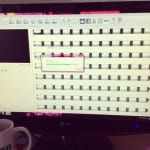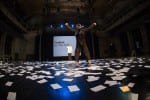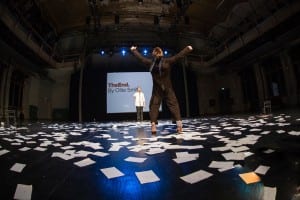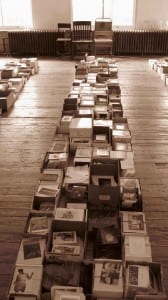We, as a company, have now established that our performance will be about the women of WWI. In order for us to follow through with our manifesto and ideas as a company, a lot of research will be required. As the company’s dramaturg it is my job to not only research as well as the other birds but to double check whether the material is appropriate for our performance. By this I mean, historically and conceptually appropriate.
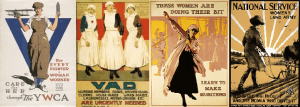
(Chapman, 2014)
It would seem ideal then for us to start with the roles women took on when the war came about. Many women did work before the war began, however, this was the first time where there was mass employment for all women. Half a million women worked for the first time during the war as well as over one million volunteers (BBC, 2014). Much of the work undertaken by women, over 600,000, during this time were roles that had previously been dominated by males especially those within industry (Brosnan, 2014).
Women’s took up jobs in policing, working the land, public transport, the post office, nursing, factories, the Armed services, the Government positions, clerks in businesses and many other. Many women went to work in the munitions factories, a job that was highly dangerous. The munitionettes produced 80% of the weapons and shells for the British Army and were exposed daily to the poisonous substances without strict safety measures (Martin, 2009). They became known as the ‘canary girls’ due to the yellowing of their skin dealing with sulphur contained within the shells (ibid).
With the knowledge of the munitionettes, we decided that this would be a part of our performance somehow, We wanted to show that not only were the men fighting on the front line were risking their lives for their country but also women back home were also risking their lives to support their boys and war effort. We began to develop a choreographed sequence to show the monotony of the factory work, the character of these brave women and the demand for the front line. Below is some of the improvisation we did, to start developing the scene:
Another way in which we are portraying the women in WWI in our piece is through the use of verbatim inspired by Dan Canham and Stillhouse’s performance Ours Was the Fen Country. Both Lauren Simpson and Louise have researched their family’s involvement in the war. Both have interviewed relatives and discovered more articles that we can potentially use in the performance. We are hoping that we can use their interviews as part of the verbatim as both talk of women in different areas of work including the cotton mills and munition factories and also working as a butler. We don’t wish to act these people’s voices but we want to transpire these voices through us to the audience as Dan Canham explains”…we’ve been playing a lot with people’s voices almost as if they’re not with us, so placing people’s voices in little speakers or having their voices disembodies, what it means to embody their voices, almost as if we’re kind of bringing them into the room making them visible, making them embodied because they’re not with us literally” (Stillhouse, 2013).
We are also going to, hopefully, use the letters we have found at the Museum of Lincolnshire Life and the Lincolnshire Archives from Billy Lounds and Harry Butt. We have researched both Dora and Alice, the two recipients of their letters, and have found some details about them. However, again we do not want to act as these women reading these letters as we don’t know who these women were or what they were thinking when they did receive the letters. In order for us to use these letters, we will have to negotiate a way in which to speak these letters without fabrication.

(Chapman, 2014)
Works Cited:
. BBC (2014) iWonder: What Did World War One Really Do For Women? [online] London:BBC. Available from: http://www.bbc.co.uk/guides/z9bf9j6. [Accessed February 2014].
.Brosnan, M. (2014) The Women War Workers of the North West. [online] London: IWM. Available from: http://www.iwm.org.uk/history/the-women-war-workers-of-the-north-west. [Accesssed 10th February 2014].
Imperial War Museum (2014) Women’s Services in the First World War. [online] London: IWM. Available from: http://www.iwm.org.uk/history/womens-services-in-the-first-world-war. [Accessed 10th February 2014].
.Martin, S. (2009) Women and WWI- Women in the Workforce: Temporary Men. [online] Available from: http://www.firstworldwar.com/features/womenww1_four.htm [Accessed 10th February 2014].
Stillhouse (2013) Ours Was The Fen Country- Research and Development, May 2012. [podcast] 2013. Available from: http://vimeo.com/45147781. [Accessed 20th February 2014].
